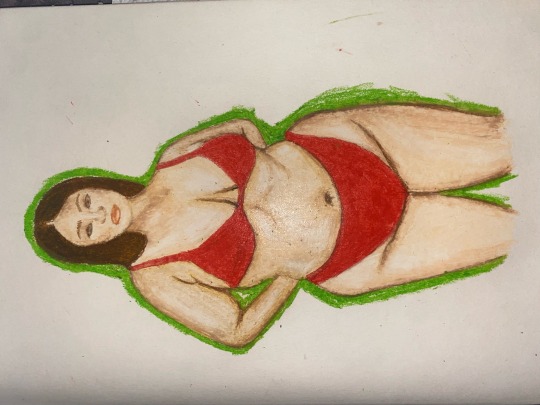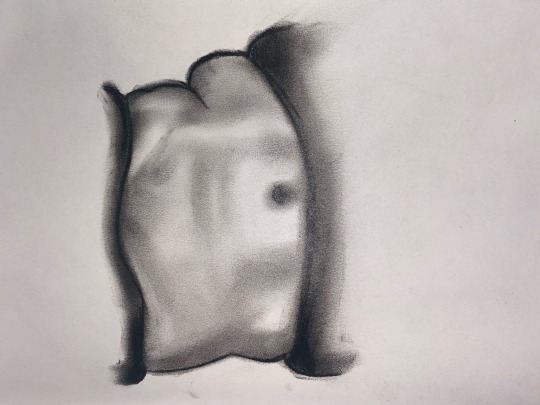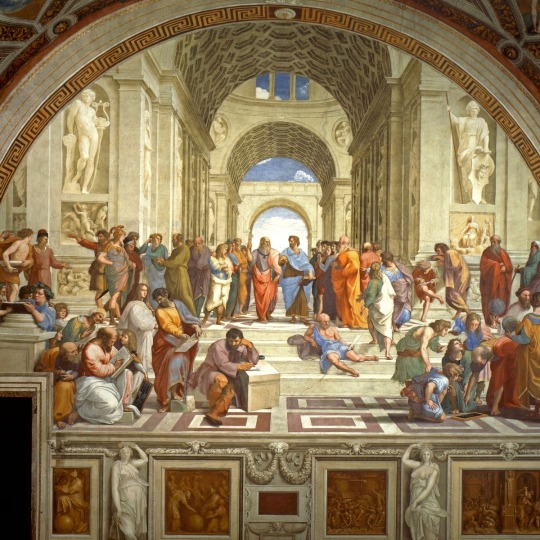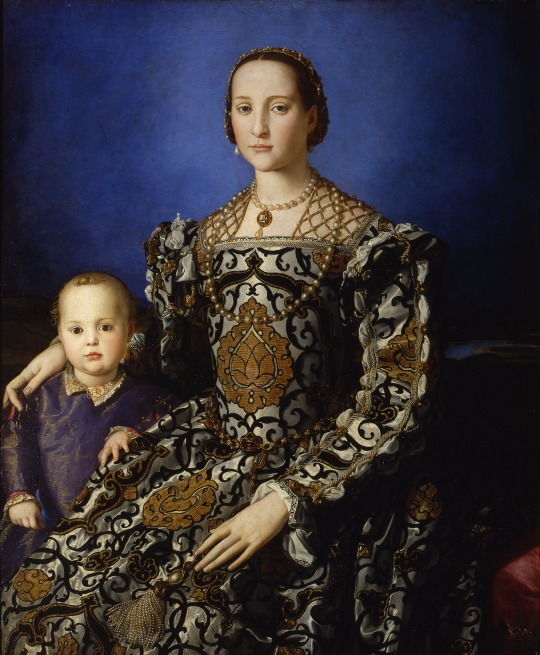#also Paleolithic Europeans had black skin
Text
Was reminded (because I am kinda terrible at social media) that I ought to let people know I made an art history video about the cave art in Lascaux: How it was made; what pigments and what ingenious art tools were used (Paleolithic mouth-powered airbrushes!); and the historical development of ideas of the Paleolithic and how they were shaped by prejudices of the time.
And I bust some myths:
The cave paintings and engravings had nothing to do with hunting. The animals that people of the time hunted don't show up in the cave art.
It is very unlikely that men made that art. There has not yet been found any physical evidence of adult men in any of the decorated caves of France and Spain -- but there are numerous examples of footprints and finger-marks of smaller people, from woman-sized down to baby-sized, and groups of children alongide woman-sized footprints.
For some weird reason most of the scholarship on Lascaux identifies these smaller footprints as "adolescent boys" for no apparent reason apart from, well, sexism. The increasingly unlikely and awkward contortions made to rationalize how half-grown boy children made this magnificent art, rather than any acknowledgement that perhaps experienced adult women artists had a hand in it, feel kinda bizarre to me.
Anyway, here's my art history video. It's educational!
youtube
#Lascaux#Art history#Paleolithic#Cave Art#cave paintings#women artists#women in art#women in art history#art techniques#no seriously you can make a mouth powered airbrush with two hollow bones and a bowl of paint AND THEY DID#also Paleolithic Europeans had black skin#Youtube
47 notes
·
View notes
Text
Templars and the Black Madonnas
From 1100 A.D. to 1300 A.D., hundreds of Gothic Cathedrals were constructed all over Europe. These great Gothic cathedrals, such as the ones at Chartres, Paris, Salisbury, St.Denis, and Cluny were dedicated to Notre Dame, Our Lady. Our Lady is usually thought to be the Blessed Virgin Mary, but by some Mary Magdalene.
Most cathedrals were also home to Black Madonnas, of which about 400 to 500 are present in Europe, depending on how they are classified. There are at least 180 Vierges Noires in France, and there are hundreds of non-medieval copies as well.
Black Virgins have been associated by historians and archaeologists with mother goddesses, such as Isis, deities sometimes represented as black. Historically, Isis of Egypt was the first recorded appearance of a Black Madonna, other than the Paleolithic Venus figurines.
As the indigenous goddess worship evolved in Europe, statues of dark skinned Middle Eastern goddesses such as Inanna, Astarte, Artemis and Cybele were introduced to the European continent by Phoenician traders from 1550 BC to about 30 BCE. The Phoenicians came from the coastal regions of modern day Lebanon, Syria and Israel and were highly influential culturally. Indeed their phonetic alphabet is believed to be the forerunner of most modern alphabets.
The Roman invasion of Gaul (France) and other parts of Europe also encouraged worship of these goddesses. The cult of Isis was the dominant religion of the Mediterranean during late Roman times, and had spread into Roman-occupied lands, including Gaul. The city of Paris was devoted to Isis, as Lyon was to Cybele and Marseilles to Artemis.
Many of the black Madonnas exist in France, and date from around the time of the crusades, when Bernard of Clairvaux wrote numerous commentaries on the Canticles, comparing the soul to the bride, Our Lady. He was also known to have visited several shrines of the Black Madonna, for example: Chatillon and Affligem.
Ean Begg, author of The Cult of the Black Virgin, speculates that the genre developed from an esoteric popular religion common among the Templars and Cathars, perhaps as a complement to the impetus from Bernard. He even states that many of the Black Virgins in European cathedrals were brought from the near east by the Knights Templar. Lynn Picknett, author of Mary Magdalene: Christianity's Hidden Goddess, and The Templar Revelation, links the Black Madonnas to Magdalene, whom, he thinks, may have come from Ethiopia, a dark skinned, powerful, and wealthy queen.
#Knights Templar#black Madonnas#Mary Magdalene#Secret Mother Goddess#ISIS#Artemis#Cult of the Black Virgin
0 notes
Text
Assignment 5:part 2
After researching Jenny Saville and finding out that her main reason for drawing plus size women is for the amount of skin, I was inspired to have a go at sketching some of my own playing with different mediums.
For my first sketch, I used oil pastels to try to mimic the texture of skin. I found this piece difficult to work with as my sketch is on a4, I couldnt add the detail that I originally imagined. I struggled to add definition to the face and resulting in blending the different shades with each other rather then using my fingers.

For my second sketch, I used a black charcoal stick and I love the way this turned out! Eventhough it’s black and white and most of Jenny’s artwork is in colour; I feel as though this sketch most related to Saville’s work. To lay down the layers of shadows, I used my finger to rub the pigment into the paper in order to create a more realistic illusion rather then having harsh stroke lines.

As I loved how the charcoal turned out so much, I decided to use coloured conte sticks for my third sketch. I didn’t want to focus to much of my time on the bikini as I wanted to spend my time focusing on the skin like Saville. I used 4 different shade in my set and used my fingers to blend the colours together.

For my fourth sketch, I used 5 different colour brush pens and coloured in from dark to light to create the gradient of the skin.

As much as I do like my sketches above, I feel like they don’t really tell much of a story. This then led me to look at another artist Tracy Emin.
Tracey Emin Research point:
Tracey Emin’s expressive and visceral art is one of disclosure, dealing with personal experience and heightened states of emotion. Emin’s practice includes painting, drawing, film, photography, sewn appliqué, sculpture and neon, all of which are transformed into highly personalised mediums for her singular voice. Rather then drawing something that she’s fascinated by like Saville; Tracey creates through emotion and experiences that she has either been through or is going through in that moment of time. ‘Emin makes reference to her family, childhood, and chaotic teenage years growing up in the seaside town of Margate. Her relationships, pregnancies and abortions are recounted through drawings, photographs, found objects and videos in a manner that is neither tragic nor sentimental and which resonates deeply with the audience.’ https://whitecube.com/artists/artist/tracey_emin
The two paintings below are figure drawings from Tracey Emin. The first piece ‘Terribly wrong’ is a drawing showing the horror that she went through having an abortion in 1994 after splitting with her ex. “She exhibited drawings, together with documentation and remnants of the events of this disastrous week in Minky Manky at South London Gallery in 1995 under the collective title A Week From Hell.” The second image is a painting ‘They Held me down while he Fucked me 1976’, 2018 is a painting that shows the movement in her imagination of another tragic event that she went through. ‘When Emin was 13, her 14 year girlfriend and her 19 year old boyfriend held her down whilst the boyfriend’s mate raped her. They thought she needed to lose her virginity not knowing that she had been raped four months before.’ https://200-percent.com/tag/tracey-emin-they-held-me-down-while-he-fucked-me-1976/


Seeing how these two artists create figurative work for two completely different reasons defiantly opened my eyes to show me that the experience of art really is different for everyone.
I then wanted to dig deeper into researching art throughout time and how the figure has changed to do with factors such as culture, propaganda and fashion.
As much as i wanted to be able to research art throughout time for all continents, i focused on researching about European, African and Asian art throughout time.
Art throughout time Europe:
“European art history began with early mobile anthropomorphic carvings in the Paleolithic era, as well as cave paintings reflecting the natural world. Europe took a distinct turn from other regions with the rise of the Greek empire, and Greek classical art and architecture influenced later European art for centuries. The Christian church influenced much of medieval art until the Renaissance, when a revival in classical ideas turned artistic attention to humanistic themes. Subsequent artistic movements were alternatively progressive and conservative, typically developing as reactions to previous movements.”

https://www.softschools.com/timelines/european_art_history_timeline/366/
In the 1400’s the renaissance period started. During the Renaissance period art was used as a religious tool to help people who could not read and write to understand the bible. Most artworks, particularly paintings, contained symbols or icons which held extra meaning. Some of the most recognizable Renaissance symbols were embedded in paintings by using imagery of animals, flowers, fruits and many other symbols. The use of color was used as well to give a certain meaning to paintings.
Colours: The symbolic meaning of the following colors is not directly related only to the Renaissance period. Their meaning has been rather universally accepted. Red denotes excitement and intensity, Pink stands for feelings of tenderness, Yellow symbolizes joy, happiness, optimism, Blue reflects peace, tranquility. Green represents nature and health, White stands for purity and cleanliness, Black represents power, sophistication formality and death.
Animals: Serpents and snakes indicate the reason for the fall of mankind or something evil, the Swan symbolized purity, Dogs had a double symbolism of fidelity and seductiveness, Rabbit was a symbol of purity and fertility, Birds had several meanings which represented sacrifice, resurrection, the soul, and death, Butterflies were indicative of resurrection, the Ox represented calmness strength and humility, Dragon stood for Satan or devil, Lion for the resurrection and also courage, Cats represented lust, desire, treason shrewdness and treachery, the White Horse was a symbol of victory, lamb stood for peace, and innocence, Unicorn was a symbol of purity and harmony, Wolf symbolized compassion,
Flowers: A red Carnation was a symbol of love and pink carnations, symbol of marriage, a white Lily was the flower used as the emblem of the Virgin, Orchids represented jealousy and deceit, Rose symbolized the Virgin Mary, the meaning of Tulips was wealth and prosperity, a Lily represented purity, virginity, the Iris represented spring, the Lavender was desire and the Dandelion was a symbol of innocence.
Fruits: The Pomegranate stood for desire and eternal life, the Apple represented evil as in the forbidden fruit of Adam and Eve, a Pear meant marital faith. The Strawberry stood for harmony. Peaches symbolized virtue and honor. A rotting or half-eaten peach symbolized an immoral woman who has tarnished her reputation. Orange was the symbol of free will, the Lemon was symbolic of a bitter heart or a sour disposition. Grapes signified lewdness and lustful thoughts.
Other symbols: A depicted Garden represented paradise, Key stood for many things mainly access to heaven or knowledge, the Mirror had many symbolic meanings such as prudence, clarity, and fidelity or vanity and introspective nature, also truth and objectivity by reflecting a precise image, the Boat mainly associated with Christian symbols, was symbolic means of transport along a spiritual path, an Open book as expected, signified education or knowledge, the Lute was symbolic of a romantic love, the Hourglass symbolized the passing of time, Bells were a sign of clarity and transparency, a Sword and arrows were martyrdom, Trees represent spiritual nourishment, triumph over temptation.
The renaissance period produce innovated thinkers and artists such as Michelangelo, Raphael and Leonardo da Vinci. Art during this time is known for its realistic scenery, linear perspective and its innovative light and dark shadowing.
Italys intermingling of maths, science and art led to the discovery of perspective in the arts. Perspective was an achievement that allowed new space to be configured in a painting and meant that images were now mathematically accurate with dimention and depth. This meant that art started to appear 3D rather then 2D. Two examples of this are shown below.

The painting above is ‘The Coronation of the Virgin by Agnolo Gaddi’. Eventhough the painting is extremely detailed with a great vibrancy of colour; the lack of linear perspective makes the painting appear 2D. This painting is believed to have been painted around 1370 which was just before the idea of perspective really got explored.
A great example showing perspective during the Renaissance is ‘The school of Athens by Rafael’ painted in 1508. As you can see in the painting below; the piece appears 3D and as if the canvas is literally protruding backwards with the room. After comparing the two, its safe to say that from 1370-1500’s; the fashion didn’t change much but the skill and knowledge behind a painting dramatically changed.

During the Renaissance period, the church was one of the most powerful and wealthiest institutions in Italy. This meant that church’s were able to commission artists to create sculptures and architecture. Christian saints were painted and sculpted to replace the Byzantine mosaics and murals. Artists began incorporating and fusing the Christian iconography with the Greek and Roman symbols and imagery.
Another factor which influenced artists during this period was the Medici family. ‘The House of Medici was an Italian banking family and political dynasty that first began to gather prominence under Cosimo de' Medici in the Republic of Florence during the first half of the 15th century.’ The Medici needed images, particularly portraits, to establish their power. They used portraits as a propaganda weapon. Artists would use the symbolism as mentioned above to get across the message that the family wanted. The portrait below of ‘Eleanor of Toledo painted by Agnolo di Cosimo (also known as Bronzino) shows the use of symbolism very well. ‘The portrait is of Eleanor of Toledo with her son Giovanni in 1545. It is considered to be the first state portrait to depict a rulers wife with his heir. The painting was made to demonstrate the wealth, domesticity and the continuity of the Medici family.’
The first colour that hit me while studying this picture was the royal blue background surrounded by the black shadows. Blue represents peace and tranquility while black represents power and sophistication in this case. Eleanor is also draped in a black, white and yellow patterned dress which is showing how she herself is powerful, sophisticated, happy, optimistic with purity and cleanliness. Eleanors infant child is dressed in mainly blue with a golden shimmer with white frills insisting that he is also peaceful, happy and pure. Both Eleanor and her son have very pale white skin with a blush of pink on their cheeks. Not only would white skin represent purity and cleanliness but it also screamed wealth. In the past, most people of European decent worked outdoors, so only those who were rich enough to stay inside were pale. Paleness was exclusive, and therefore fashionable. The blush of pink on their cheeks creates a feeling of tenderness and kindness. In total the propaganda painting below screams that the family are full of harmonious and power and wealth.

0 notes